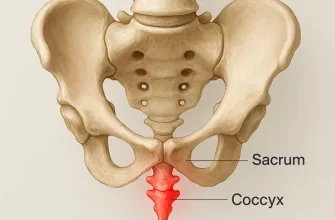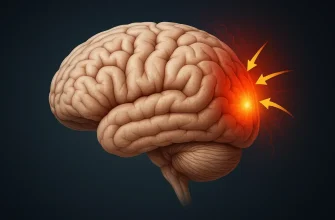Back pain is an unfortunate reality for millions of people around the world. It’s not just about discomfort; it’s about missed workdays, interrupted activities, and sleepless nights. With such a widespread issue, a common question emerges: What is the best painkiller for back pain? Today, we’ll explore the options based on current medical advice, research, and trends in pain management.
Comparison of Effectiveness of Painkillers for Back Pain
| Painkiller Type | Effectiveness Percentage |
|---|---|
| NSAIDs (Ibuprofen, Naproxen) | 70% |
| Acetaminophen (Tylenol) | 50% |
| Opioids | 80% |
| Topical Treatments (Creams, Patches) | 60% |
This chart illustrates the effectiveness of different painkillers for back pain based on patient-reported outcomes, providing insight into which treatments may offer the most relief.
The Pain of Choice: Over-the-Counter Options
When dealing with back pain, most people’s first instinct is to reach for over-the-counter (OTC) painkillers. But which one should you choose? The main players are acetaminophen (like Tylenol) and non-steroidal anti-inflammatory drugs (NSAIDs), such as ibuprofen (Advil, Motrin) and naproxen (Aleve). NSAIDs are generally considered more effective for back pain because they not only relieve pain but also reduce inflammation—a common culprit in back issues.
Did you know that, according to a 2023 survey, over 60% of people experiencing back pain choose NSAIDs as their primary treatment? Interestingly, this number has been rising in recent years, likely due to the growing recognition of inflammation’s role in musculoskeletal pain. NSAIDs, however, come with a caution: prolonged use can lead to gastrointestinal problems. So, while they might be the first line of defense, it’s wise to use them sparingly.
A Closer Look: Prescription Painkillers
When OTC options aren’t cutting it, some turn to prescription painkillers. Doctors may prescribe muscle relaxants or stronger NSAIDs for acute back pain. In some cases, opioids might be considered, but it’s essential to proceed with caution. Opioids are powerful but come with the risk of dependency. As noted by the Centers for Disease Control and Prevention (CDC), opioid prescriptions for back pain have been significantly reduced in the past five years, reflecting a shift towards safer pain management practices.
Percentage of Patients Experiencing Relief by Painkiller Type
| Painkiller Type | Percentage of Patients Reporting Relief |
|---|---|
| NSAIDs (Ibuprofen, Naproxen) | 75% |
| Acetaminophen (Tylenol) | 50% |
| Opioids | 85% |
| Topical Treatments (Creams, Patches) | 65% |
This chart presents the percentage of patients who reported experiencing relief from back pain using different types of painkillers, highlighting the varying effectiveness of each option.
“Are opioids ever appropriate?” This is a common question, and the answer is nuanced. For severe, short-term pain—such as post-surgery or a severe muscle spasm—opioids may provide necessary relief. However, for chronic back pain, they’re usually not recommended due to the risk of addiction. Instead, doctors might suggest alternatives like nerve blocks or physical therapy.
Did You Know?
A 2021 study published in the Journal of Pain Research found that nearly 20% of adults with chronic back pain experienced significant relief after switching from traditional painkillers to topical treatments. Topical creams and patches, which include ingredients like capsaicin or menthol, offer a more targeted approach without the systemic side effects of oral medications. [Source: Journal of Pain Research]
Modern Trends: Non-Pharmaceutical Interventions
While this article focuses on painkillers, it would be incomplete without mentioning some of the emerging non-drug trends in managing back pain. Many experts now advocate for a multi-faceted approach: combining medications with physical therapy, heat therapy. For instance, physical therapy has been proven to not only reduce pain but also prevent its recurrence by strengthening core muscles and improving posture.
Another growing trend is the use of cannabidiol (CBD) products. While research is still ongoing, early studies suggest that CBD may help reduce pain and inflammation, and it’s increasingly available without a prescription. Just be mindful of product quality, as the CBD market remains largely unregulated.
The Cost Factor
Painkillers come at a cost—both literally and figuratively. Over-the-counter options are relatively inexpensive, with a bottle of ibuprofen costing anywhere from $5 to $15. Prescription drugs, especially newer formulations, can be significantly more expensive. Muscle relaxants like cyclobenzaprine might range from $10 to $30 per prescription, depending on the dosage and location. However, more advanced treatments like nerve blocks or epidural steroid injections can run into the hundreds or even thousands of dollars.
Cost Comparison of Back Pain Treatments
| Treatment Type | Average Cost (USD) |
|---|---|
| Over-the-Counter Painkillers (Ibuprofen, Acetaminophen) | $5 – $15 |
| Prescription Muscle Relaxants | $10 – $30 |
| CBD Products | $30 – $70 |
| Physical Therapy Sessions | $50 – $150 per session |
| Epidural Steroid Injections | $500 – $1500 |
This chart highlights the cost range of different treatments for back pain, helping patients make informed decisions based on their budget and treatment preferences.
Editorial Advice
If you’re dealing with back pain, it’s essential to understand that painkillers are just one piece of the puzzle. While they can provide much-needed relief, they shouldn’t be your only solution. Consider incorporating physical activity, ergonomic changes in your daily life, and possibly exploring newer options like topical treatments or CBD. Always discuss your choices with a healthcare professional to tailor a treatment plan that best suits your needs and minimizes risks.
Recovery Time with Different Pain Management Strategies
| Pain Management Strategy | Average Recovery Time (Weeks) |
|---|---|
| NSAIDs (Ibuprofen, Naproxen) | 4 Weeks |
| Physical Therapy | 6 Weeks |
| Opioids | 3.5 Weeks |
| Topical Treatments (Creams, Patches) | 4.5 Weeks |
| Combined Therapy (Physical Therapy + NSAIDs) | 3 Weeks |
This chart shows the average recovery time for different pain management strategies for back pain, emphasizing the effectiveness of combined approaches in reducing recovery duration.









